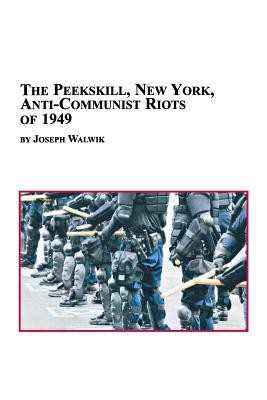
- We will send in 10–14 business days.
- Author: Joseph Walwik
- Publisher: Em Texts
- ISBN-10: 077340807X
- ISBN-13: 9780773408074
- Format: 15.2 x 22.9 x 1.1 cm, minkšti viršeliai
- Language: English
- SAVE -10% with code: EXTRA
The Peekskill, New York, Anti-Communist Riots of 1949 (e-book) (used book) | bookbook.eu
Reviews
Description
In the summer of 1949, the Cold War came to Peekskill, NY, as two proposed Paul Robeson concerts were marred by the protests of local veterans' organizations. The protests exploded into violence as area residents joined the protest. This even provides important insights into the nature of American anti-communism in the early Cold War. The riots, and anti-communism in general, have long been portrayed as the result of political manipulation. This work suggest that it is more a rational response to local, national, and international events than it is a product of political conspiracy. This work rectifies the usual overly-simplified view by examining the cause-and-effect relationships that led to the events, within the larger context of the Cold War.
EXTRA 10 % discount with code: EXTRA
The promotion ends in 22d.17:45:57
The discount code is valid when purchasing from 10 €. Discounts do not stack.
- Author: Joseph Walwik
- Publisher: Em Texts
- ISBN-10: 077340807X
- ISBN-13: 9780773408074
- Format: 15.2 x 22.9 x 1.1 cm, minkšti viršeliai
- Language: English English
In the summer of 1949, the Cold War came to Peekskill, NY, as two proposed Paul Robeson concerts were marred by the protests of local veterans' organizations. The protests exploded into violence as area residents joined the protest. This even provides important insights into the nature of American anti-communism in the early Cold War. The riots, and anti-communism in general, have long been portrayed as the result of political manipulation. This work suggest that it is more a rational response to local, national, and international events than it is a product of political conspiracy. This work rectifies the usual overly-simplified view by examining the cause-and-effect relationships that led to the events, within the larger context of the Cold War.


Reviews